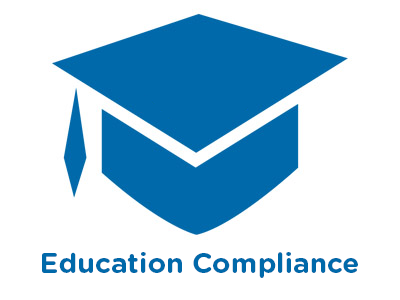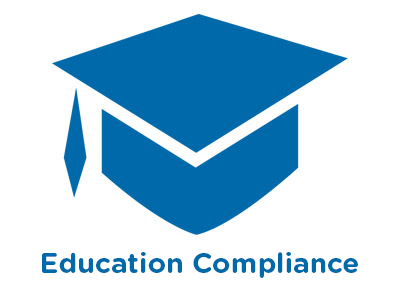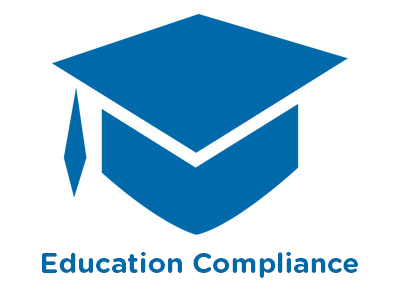 |
Employee Performance: Communication (Instructor Guide) |
1.00 |
Communication is effective when a listener clearly understands a speaker’s message. Good communication fosters a productive exchange of ideas while minimizing the possibility of confusion or misunderstanding.
When trying to communicate with a difficult employee, you must be willing to work with that person to correct the problematic behavior. Openly discussing the behavior can help you find a mutually acceptable solution.
In this course you will learn to: communicate clearly and effectively by using verbal and nonverbal communication, and improve your listening skills, and communicate with difficult supervisors and coworkers, take a proactive approach when dealing with difficult employees, and identify types of employee dismissals.
This Instructor's Edition of this course includes notes and suggestions to assist you in presenting the material, whether in an in-person classroom setting, or as an instructor-led online or distance-learning course. It also provides you with the answers to questions found in mid-lesson activities, as well as in the quiz that concludes the course. |
 |
Communicating with Families |
2.00 |
Communication and positive relationships with families improve when program staff recognize family members as partners. Staff can benefit from acknowledging their feelings about families and identifying how these feelings help or hinder working with families. This course provides participants the opportunity to identify their attitudes towards families, consider how their attitudes can enhance or detract from their ability to develop positive relationships with families, and examine how a program’s overall environment supports strong staff-family communication. |
 |
A Student Guide to Campus Safety at a Glance |
0.50 |
Colleges and universities devote much time and effort to creating safe learning and living environments for students and staff. Students an important role to play. This course outlines the safety precautions students should know and apply, whether they are on or off campus.
|
 |
Export Control in Higher Education |
1.00 |
Colleges and universities are at the cutting edge of research in strategic technologies, microsystems engineering, astrophysics and imaging, and computing and information systems, among other fields. Our government controls the export of sensitive equipment, software, and technology as a way to protect our national security interests, and promote our foreign policy objectives. Export control describes the regulatory system in place to do so. |
 |
A Student Guide to Drug and Alcohol Abuse |
0.50 |
College students rank high among people who abuse drugs and alcohol on a regular basis. Students turn to drugs and alcohol for many reasons: they are on their own for the first time, and want to experiment; they are surrounded by others who drink or do drugs; they are stressed, and think it will help them to cope. In this course, students will define abuse, recognize the signs of abuse, define binge drinking and its risks, and identify sources of support.
|
 |
Advanced Interpersonal Communication: Colleagues and Subordinates (Instructor Guide) |
0.50 |
Colleagues might include people in your office, team, department, or division. They do not hold a supervisory position over you, nor do you hold a supervisory position over them. Instead, you are all in a similar place on the corporate ladder. Learning how to communicate effectively with your colleagues helps maintain a friendly and effective workplace, and enables you to better promote your ideas and respond to those of others.
In this course you will learn: to identify the guidelines for communicating with colleagues, and how to take appropriate steps to apologize to subordinates; use appropriate tactics to refuse a subordinate’s request; and dismiss a subordinate.
This Instructor's Edition of this course includes notes and suggestions to assist you in presenting the material, whether in an in-person classroom setting or as an instructor-led online or distance-learning course. It also provides you with the answers to questions found in mid-lesson activities, as well as in the quiz that concludes the course. |
 |
Advanced Interpersonal Communication: Colleagues and Subordinates |
0.50 |
Colleagues might include people in your office, team, department, or division. They do not hold a supervisory position over you, nor do you hold a supervisory position over them. Instead, you are all in a similar place on the corporate ladder. Learning how to communicate effectively with your colleagues helps maintain a friendly and effective workplace, and enables you to better promote your ideas and respond to those of others.
In this course you will learn: to identify the guidelines for communicating with colleagues, and how to take appropriate steps to apologize to subordinates; use appropriate tactics to refuse a subordinate’s request; and dismiss a subordinate. |
 |
Reduce the Spread of Germs in Child Care Programs (CDA 1) |
2.00 |
Colds, stomach viruses, and ear infections top the list of common illnesses for young children. Young children in child care centers and homes tend to get these common illnesses more frequently than young children who are not in group care. In many child care settings, illness moves quickly from one child to another. This course examines how to reduce the spread of germs in child care programs and establish ways to keep young children and the adults who care for them healthy. This course is designed to be part of a Child Development Associate (CDA) Credential™ curriculum. It covers CDA Subject Area 1: Planning a Safe, Healthy Environment to Invite Learning. This course can also be taken as a stand-alone learning event, or as part of a broader early childhood education curriculum.
|
 |
Coaching: Fundamentals Of Coaching |
1.00 |
Coaching is the continuous effort to help employees maximize their abilities through personalized counseling and advice. The coaching process not only trains employees to become familiar with business procedures and expectations, but also motivates them to reach both individual and company goals.
Coaching is beneficial to employees because it encourages them to discover their worth and potential. Through proper coaching sessions, employees build confidence, improve their work habits, and increase their productivity.
In this course you will learn to:
1. Define coaching and identify the qualities of an effective coach
2. Build a coaching foundation and plan a coaching strategy. |
 |
Coaching: Fundamentals of Coaching (Instructor Guide) |
1.00 |
Coaching is the continuous effort to help employees maximize their abilities through personalized counseling and advice. The coaching process not only trains employees to become familiar with business procedures and expectations, but also motivates them to reach both individual and company goals.
Coaching is beneficial to employees because it encourages them to discover their worth and potential. Through proper coaching sessions, employees build confidence, improve their work habits, and increase their productivity.
In this course you will learn to:
1. Define coaching and identify the qualities of an effective coach
2. Build a coaching foundation and plan a coaching strategy.
This Instructor's Edition of this course includes notes and suggestions to assist you in presenting the material, whether in an in-person classroom setting or as an instructor-led online or distance-learning course. It also provides you with the answers to questions found in mid-lesson activities, as well as in the quiz that concludes the course. |
 |
Bleeding - Paramedic Overview |
2.00 |
Clinical Pharmacologist, Nicole Acquisto, spends time in the classroom with four experienced paramedics. In this session she reviews the ALS management of the Bleeding Cascade and briefly reviews Thromboelastography. |
 |
Conducting Meetings: Communicating As Meeting Leaders |
0.50 |
Clarity is crucial for conducting an efficient and productive meeting. By communicating clearly, you’ll be able to express ideas, overcome barriers to understanding, and specify expectations. Your ability to communicate clearly will facilitate interactions among participants, and minimize confusion and conflict.
In this course you will learn to: identify the ways to communicate clearly in a meeting, and identify communication styles to avoid, and the ways to enhance relationships with participants. |
 |
Conducting Meetings: Communicating As Meeting Leaders (Instructor Guide) |
0.50 |
Clarity is crucial for conducting an efficient and productive meeting. By communicating clearly, you’ll be able to express ideas, overcome barriers to understanding, and specify expectations. Your ability to communicate clearly will facilitate interactions among participants, and minimize confusion and conflict.
In this course you will learn to: identify the ways to communicate clearly in a meeting, and identify communication styles to avoid, and the ways to enhance relationships with participants.
This Instructor's Edition of this course includes notes and suggestions to assist you in presenting the material, whether in an in-person classroom setting, or as an instructor-led online or distance-learning course. It also provides you with the answers to questions found in mid-lesson activities, as well as in the quiz that concludes the course. |
 |
Helping Students with ADD Succeed for Paraprofessionals |
1.50 |
Children with Attention Deficit Disorder (ADD) regularly experience struggles and challenges at home, in school, and in the community. Paraprofessionals are in a unique position to make a positive difference in the lives of students with ADD. Armed with important information and management tools, they can help reverse the cycle of failure and frustration that results in low self-esteem in these students. They can make life easier, happier, and more satisfying for students with ADD, their parents, other children in the class, and themselves. |
 |
Course 24: Helping Children with ADD Succeed in School-Age Programs |
2.00 |
Children with ADD regularly experience struggles and challenges at home, in school, and in the community. Without the help of knowledgeable, understanding, and supportive people, they often experience multiple failures and frustrations on a daily basis. Typically, they lack the self-confidence that stems from learning how to do things well. Their lack of social skills and self-control makes it hard for them to make friends with schoolmates and children they meet in program activities. By the school-age years, many of these children do not feel good about themselves. They feel lonely and ostracized. Their self-esteem sinks a little lower every day.
Staff in school-age programs are in a position to make a positive difference in the lives of children with ADD. Armed with important information and management tools, they can help reverse the cycle of failure and frustration that results in low self-esteem in these children. They can make life easier, happier, and more satisfying for children with ADD, their parents, other children in the program, and themselves.
IMPORTANT NOTE: ADD stands for Attention Deficit disorder. Many professionals refer to this disorder as ADHD, which stands for Attention Deficit Hyperactivity Disorder. Some professionals use these terms simultaneously or interchangeably. In this module, the term ADD is used to refer to the basic form of the disorder and recognizes that the basic pattern of inattention associated with ADD often includes the component of hyperactivity related to extremes in temperament.
|
 |
Helping Children with ADD Succeed In School-Age Programs (Collection) |
2.00 |
Children with ADD regularly experience struggles and challenges at home, in school, and in the community. Without the help of knowledgeable, understanding, and supportive people, they often experience multiple failures and frustrations on a daily basis. Typically, they lack the self-confidence that stems from learning how to do things well. Their lack of social skills and self-control makes it hard for them to make friends with schoolmates and children they meet in program activities. By the school-age years, many of these children do not feel good about themselves. They feel lonely and ostracized. Their self-esteem sinks a little lower every day.
Staff in school-age programs are in a position to make a positive difference in the lives of children with ADD. Armed with important information and management tools, they can help reverse the cycle of failure and frustration that results in low self-esteem in these children. They can make life easier, happier, and more satisfying for children with ADD, their parents, other children in the program, and themselves.
IMPORTANT NOTE: ADD stands for Attention Deficit disorder. Many professionals refer to this disorder as ADHD, which stands for Attention Deficit Hyperactivity Disorder. Some professionals use these terms simultaneously or interchangeably. In this module, the term ADD is used to refer to the basic form of the disorder and recognizes that the basic pattern of inattention associated with ADD often includes the component of hyperactivity related to extremes in temperament. |
 |
Helping Children with ADD Succeed in School-Age Programs |
2.00 |
Children with ADD regularly experience struggles and challenges at home, in school, and in the community. Without the help of knowledgeable, understanding, and supportive people, they often experience multiple failures and frustrations on a daily basis. Typically, they lack the self-confidence that stems from learning how to do things well. Their lack of social skills and self-control makes it hard for them to make friends with schoolmates and children they meet in program activities. By the school-age years, many of these children do not feel good about themselves. They feel lonely and ostracized. Their self-esteem sinks a little lower every day.
Staff in school-age programs are in a position to make a positive difference in the lives of children with ADD. Armed with important information and management tools, they can help reverse the cycle of failure and frustration that results in low self-esteem in these children. They can make life easier, happier, and more satisfying for children with ADD, their parents, other children in the program, and themselves.
IMPORTANT NOTE: ADD stands for Attention Deficit disorder. Many professionals refer to this disorder as ADHD, which stands for Attention Deficit Hyperactivity Disorder. Some professionals use these terms simultaneously or interchangeably. In this module, the term ADD is used to refer to the basic form of the disorder and recognizes that the basic pattern of inattention associated with ADD often includes the component of hyperactivity related to extremes in temperament. |
 |
Helping Children with ADD Succeed In School-Age Programs: Characteristics and Needs of Children |
1.00 |
Children with ADD regularly experience struggles and challenges at home, in school, and in the community. Without the help of knowledgeable, understanding, and supportive people, they often experience multiple failures and frustrations on a daily basis. In this course, we will explore characteristics and needs of children with ADD. |
 |
Helping Children with ADD Succeed In School-Age Programs: Strategies and Techniques for Staff |
1.00 |
Children with ADD regularly experience struggles and challenges at home, in school, and in the community. Without the help of knowledgeable, understanding, and supportive people, they often experience multiple failures and frustrations on a daily basis. In this course, we will examine strategies and techniques that staff can use when working with children with ADD. |
 |
Course 21: Creating Successful Clubs, Special Events, and Field Trips in School-Age Programs |
2.00 |
Children who regularly attend school-age programs need many opportunities to participate in activities that help them connect with their communities and work together to build on their interests, talents, and abilities. Clubs, special events, and field trips are ideal vehicles for providing these opportunities. When staff know how to work with children to plan and implement these activities, children develop a sense of program ownership that helps them become productively engaged in a variety of meaningful activities that support their development. |
 |
Creating Successful Clubs, Special Events, and Field Trips in School-Age Programs |
2.00 |
Children who regularly attend school-age programs need many opportunities to participate in activities that help them connect with their communities and work together to build on their interests, talents, and abilities. Clubs, special events, and field trips are ideal vehicles for providing these opportunities. When staff know how to work with children to plan and implement these activities, children develop a sense of program ownership that helps them become productively engaged in a variety of meaningful activities that support their development. |
 |
Developing Activities That Encourage Creativity and Cognitive Development |
2.00 |
Children who regularly attend school-age programs need many opportunities to engage in activities that will help them develop their creative potential and apply their emerging thinking abilities and skills. To support children’s needs, it is essential for school-age staff to understand the creative process, and the relationship of cognitive development to creativity. With this knowledge and understanding, staff can design and implement a program that encourages a sense of wonder as children explore their environment, fosters creative imagination, and enhances children’s ability to apply reasoning skills appropriately as they develop ideas and encounter challenges, problems, and opportunities. |
 |
Course 20: Developing Activities That Encourage Creativity and Cognitive Development |
2.00 |
Children who regularly attend school-age programs need many opportunities to engage in activities that will help them develop their creative potential and apply their emerging thinking abilities and skills. To support children’s needs, it is essential for school-age staff to understand the creative process and the relationship of cognitive development to creativity. With this knowledge and understanding, staff can design and implement a program that encourages a sense of wonder as children explore their environment, fosters creative imagination, and enhances children’s ability to apply reasoning skills appropriately as they develop ideas and encounter challenges, problems, and opportunities. |
 |
Understanding Adverse Childhood Experiences (ACEs) (CDA 3) |
2.00 |
Children who are exposed to adverse childhood experiences (ACEs) face an increased risk for social-emotional, physical, and mental health issues. ACEs include abuse, neglect, parental separation or divorce, and other traumatic experiences before the age of eighteen. This course explores the awareness of trauma in young children and families and discusses the role of the early care and education professional in nurturing resilience. This course will help you to better understand ACEs and trauma. |
 |
I Am: Supporting Self-Awareness and Self-Management |
2.00 |
Children and youth develop social-emotional skills and character over time and through a variety of experiences.
Expanded Learning Programs strongly support three foundational areas of Social-Emotional Learning and Character Building:
- I AM (Interpersonal Connections)
- I BELONG (Interpersonal Connections)
- I CAN (Belief and Mindset)
This course focuses on the I Am skills.
By the end of this course, you will:
- Understand how young people's responses affect personal emotion and behavior.
- Learn how group agreements can support self-awareness and self-management in children and youth.
- Learn strategies and resources to support I Am skill building with children and youth. |


























